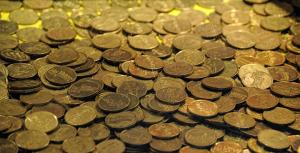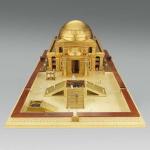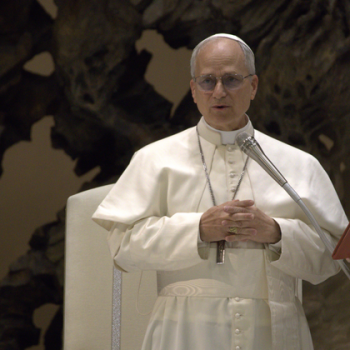1 Kings 9:14 (RSV) Hiram had sent to the king one hundred and twenty talents of gold.
1 Kings 10:10-11 Then she gave the king a hundred and twenty talents of gold, and a very great quantity of spices, and precious stones; never again came such an abundance of spices as these which the queen of Sheba gave to King Solomon. Moreover the fleet of Hiram, which brought gold from Ophir, brought from Ophir a very great amount of almug wood and precious stones.
1 Kings 10:14-18 Now the weight of gold that came to Solomon in one year was six hundred and sixty-six talents of gold, besides that which came from the traders and from the traffic of the merchants, and from all the kings of Arabia and from the governors of the land. King Solomon made two hundred large shields of beaten gold; six hundred shekels of gold went into each shield. And he made three hundred shields of beaten gold; three minas of gold went into each shield; and the king put them in the House of the Forest of Lebanon. The king also made a great ivory throne, and overlaid it with the finest gold.
Archaeologist Kenneth Kitchen observed, “Such figures have very often been dismissed as fantasy; but it is wiser to check on their background before jumping to premature conclusions.” (1) Kitchen notes that — “from firsthand sources” — we know that:
Metten II of Tyre (ca. 730) paid a tribute of 150 talents of gold to . . . Tilgath-pileser III (2) of Assyria [r. 745-727 B.C.], while in turn his successor Sargon II (727-705) (3) bestowed 154 talents of gold upon the Babylonian gods — about 6 tons in each case. (4)
Pharaoh Thutmose III of Egypt (5) [r. 1479-1426 B.C.] offered approximately 13.5 tons (more than 200 talents) of gold implements to the god Amun in Thebes, and additionally a fabulous collection of gold vessels. This constitutes almost one-third of Solomon’s reported annual revenue of gold, and it was merely one occasion, at one Egyptian temple.
But that’s a mere pittance compared to Pharaoh Osorkon I [r. c. 979-c. 973 B.C.] (6), who offered “383 tons of gold and silver” (7) to the gods of Egypt in his first four years as Pharaoh. And it’s nothing in comparison with the 1,180 tons of gold from Susa that Alexander the Great plundered, or the 7,000 tons of gold altogether that he took away from the conquered Persian Empire. (8) The website Iran (9) states that the gold taken from Persia was “more gold than today in Fort Knox.” Thomas R. Martin and Christopher W. Blackwell, biographers of Alexander the Great, estimate it to have been “200,000 talents” of precious metals (10): a sum that would be about $1.6 trillion in today’s U.S. dollars.
Thus, on what prima facie basis should the amount of wealth that the Bible attributes to King Solomon be questioned as supposed fantasy and fiction, in light of the above historical analogies from the documented facts of history?
FOOTNOTES
1) Kenneth A. Kitchen, On the Reliability of the Old Testament (Grand Rapids, Michigan: Wm. B. Eerdmans Publishing Co., 2003), 133.
2) Donald John Wiseman, “Tilgath-pileser III,” Encyclopedia Britannica. https://www.britannica.com/biography/Tiglath-pileser-III.
3) Jorgen Laessoe, “Sargon II,” Encyclopedia Britannica. https://www.britannica.com/biography/Sargon-II. This article dates the beginning of Sargon’s reign to 721 B.C., as opposed to Kitchen’s 727.
4) Kitchen, 133-134.
5) Peter F. Dornan, Margaret Stefana Drower, “”Thutmose III,” Encyclopedia Britannica. https://www.britannica.com/biography/Thutmose-III.
6) “Osorkon I,” Encyclopedia Britannica. https://www.britannica.com/biography/Osorkon-I.
7) Kitchen, 134.
8) Ibid.
9) “Alexander,” Iran. https://www.the-persians.co.uk/alexander1.htm.
10) Thomas R. Martin and Christopher W. Blackwell, Alexander the Great: The Story of an Ancient Life (Cambridge University Press, 2012), 86. https://www.amazon.com/Alexander-Great-Story-Ancient-Life/dp/0521767482/ref=sr_1_1.
***
See Related Articles
Archaeology & Solomon’s Temple-Period Ivory [1-28-23]
King Solomon’s “Mines” & Archaeological Evidence [3-24-23]
Solomon’s Temple and its Archaeological Analogies (Also, Parallels to Solomon’s Palace) [4-25-23]
***
Practical Matters: Perhaps some of my 4,200+ free online articles (the most comprehensive “one-stop” Catholic apologetics site) or fifty-one books have helped you (by God’s grace) to decide to become Catholic or to return to the Church, or better understand some doctrines and why we believe them.
Or you may believe my work is worthy to support for the purpose of apologetics and evangelism in general. If so, please seriously consider a much-needed financial contribution. I’m always in need of more funds: especially monthly support. “The laborer is worthy of his wages” (1 Tim 5:18, NKJV). 1 December 2021 was my 20th anniversary as a full-time Catholic apologist, and February 2022 marked the 25th anniversary of my blog.
PayPal donations are the easiest: just send to my email address: [email protected]. You’ll see the term “Catholic Used Book Service”, which is my old side-business. To learn about the different methods of contributing, including 100% tax deduction, etc., see my page: About Catholic Apologist Dave Armstrong / Donation Information. Thanks a million from the bottom of my heart!
***
Summary: Many critics have stated that Solomon’s wealth was “impossible”. Analogies to other rich monarchs in ancient times, however, show that it was completely possible.
















